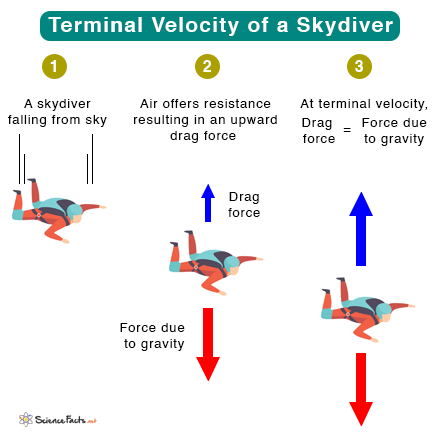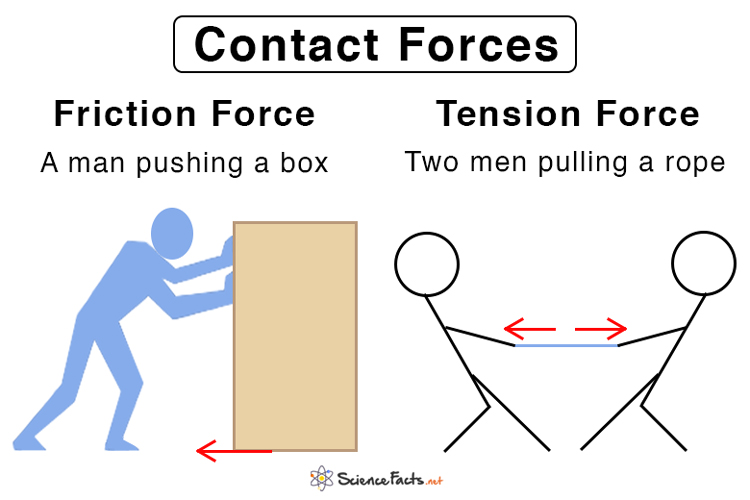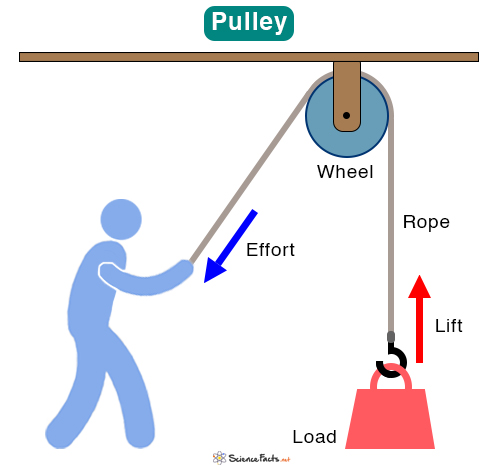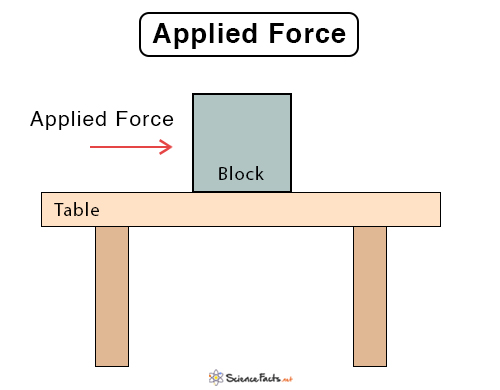What is the Terminal Velocity of a Human?
When a skydiver jumps from a plane, his velocity increases due to acceleration due to gravity. However, since he is falling through air he experiences drag force due to air resistance. As a result, his velocity is limited and reaches a constant value, known as terminal velocity. The following equation gives the terminal velocity of an object falling through the air.
\[v_{T} = \sqrt{\frac{2mg}{C\rho_{air} A}} \]
From this equation, one can see that the terminal velocity depends on:
- Density of air, ρair
- Mass of the object, m
- Area A of the object that is projected vertically. In other words, the object’s orientation.
- Drag coefficient C, which depends on the shape of the object
Thus, the speed achieved by a human during a free fall depends upon two factors – mass and orientation. Based on this, let us calculate the terminal velocity for two different positions.
1. Belly-down Position
For a human, the drag coefficient is 1 for a belly-down position, and the projected area is 0.7 m2. The density of air is 1.29 kg/m3. Let us assume that an average skydiver weighs 75 kg or 165 lbs.
Given
m = 75 kg
ρair = 1.29 kg/m3
C = 1
A = 0.7 m2
g = 9.81 m/s2
Therefore, the terminal velocity is given by
2. Head Down Position
Experienced skydivers can increase the above value substantially by diving head first with their arms against the sides of their bodies, legs held tightly together, and toes pointed. This position offers a minimum projected area perpendicular to the direction of motion and reduces the aerodynamic drag.
For the head-down dive, the drag coefficient is 0.7 and the projection area is 0.18 m2. Therefore, the terminal velocity comes out to be
This is typically the fastest a human can skydive. However, the drag can be further minimized by streamlining the body such that a speed up to 310 mph can be reached.
How can the Terminal Velocity be Increased
From the above equation, we can see that the terminal velocity can be increased by:
- being heavier
- diving in thin, low-density air
- reducing the projected area by diving head first
- reducing the drag coefficient by diving head first
- wearing clothing to improve streamlining and reduce drag
FAQs
Ans. It takes about 12 seconds to achieve terminal velocity.
-
References
Article was last reviewed on Wednesday, June 22, 2022









i need terminal velocity in decimals
40.37 m/s for Belly-down Position and 95.15 m/s for Head Down Position